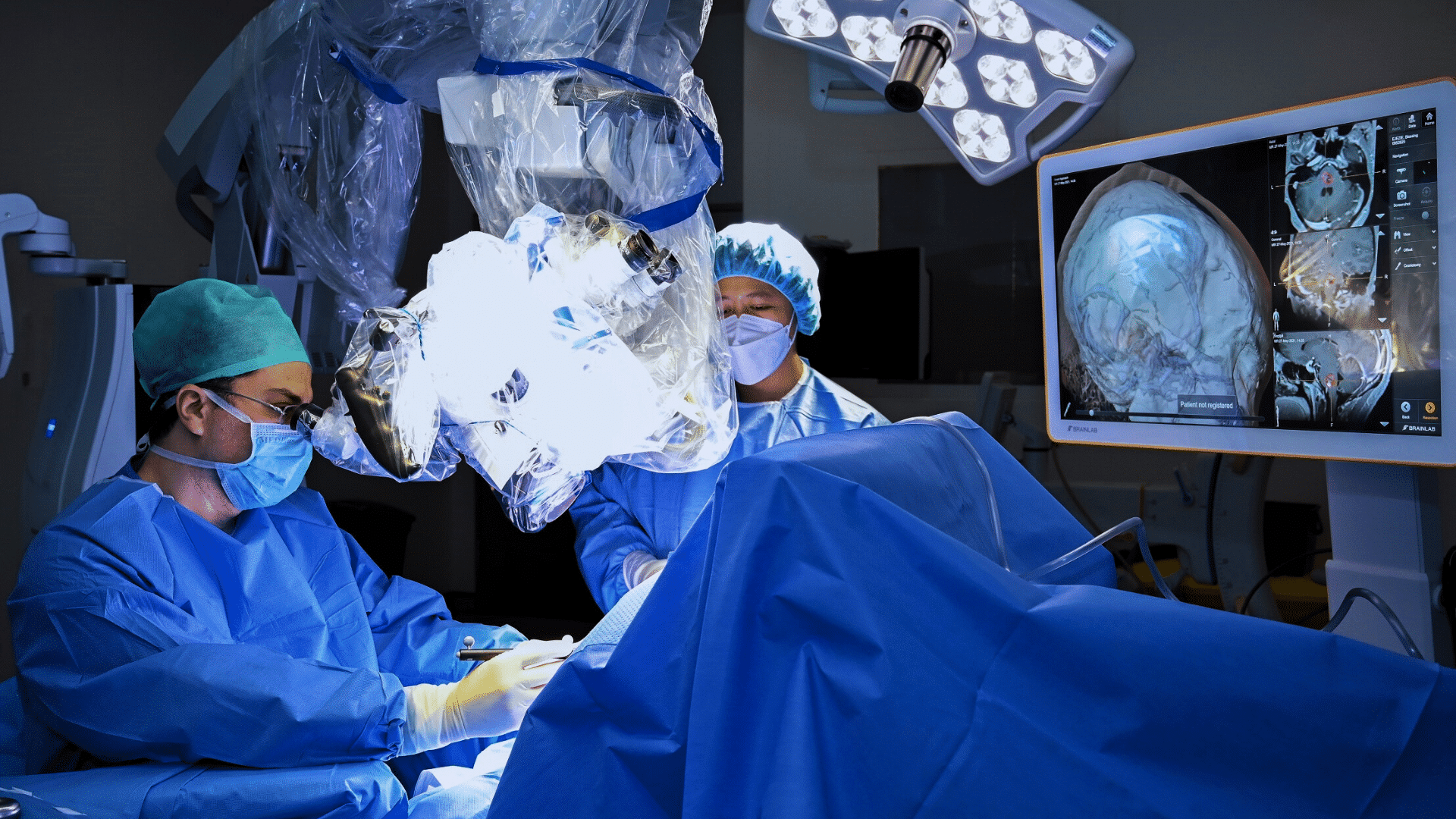
Procedures We Perform
Burr Hole Drainage for Hematomas
Burr hole drainage is a surgical procedure used to remove a blood clot near the brain. These blood clots are known as subdural hematomas because they form under the dura, which is the protective covering of the brain. Hematomas usually require removal because they can compress the brain tissue and cause life-threatening complications. In certain cases, a traditional open surgery, known as a craniotomy, may be necessary. But many hematomas can successfully be removed using burr hole drainage, in which a small perforation is created through the skull to suction out the blood and relieve pressure on the brain.
The Burr Hole Drainage Procedure
A burr hole drainage procedure requires the use of general anesthesia. The patient’s head is shaved at the treatment site. Once the head is correctly positioned by the surgical team, an antibiotic solution is applied to prevent infection. The surgeon will make a small incision in the scalp, then use a special surgical drill to create a small perforation in the skull. The dura is cut open to reveal the hematoma. Irrigation is employed to rinse the area out. The surgeon will next thoroughly drain the region via tubing to ensure that the blood clot and any excess fluid has been evacuated. Once that has been accomplished, the surgeon will close the incision.
Risks of Burr Hole Drainage
While a burr hole drainage procedure is relatively common and much less invasive than open forms of brain surgery, it does still pose a number of risks. The complications of burr hole drainage may include brain injury, accumulation of fluid around the brain, seizure, stroke, weakness, paralysis, bleeding and infection.
Recovery from a Burr Hole Drainage Procedure
Patients are generally required to remain in the hospital for a period of several days following a burr hole drainage procedure. A patient’s activities may be restricted for the first few weeks after surgery, and they are advised to avoid any strenuous forms of exercise or activities that might result in a head injury.
Many of the symptoms typically experienced with a subdural hematoma, such as headaches, balance problems, numbness, weakness and speech issues, are often resolved immediately after the surgery. Some patients require rehabilitation services to restore their previous functionality. In certain cases, seizures may persist for some time after the burr hole drainage procedure, but can generally be managed by taking prescription anticonvulsant medication.
Additional Resources
Welcome to the office of neurosurgeon Dr. Vikas Rao, where your health comes first. Below are some of the neurosurgical treatments that we offer in Mission Viejo, CA:
Contact us today
Your concerns are important to us, and we want to make sure all of your questions are answered so you understand your options. Please contact our office with any questions, and our team will be happy to assist you.
Give us a call
We're open to serve
Book an appointment
Our doctor and staff are devoted to our patients. Please fill out the form below with any questions or to schedule an appointment and our team will get back to you within 24 to 48 hours.





